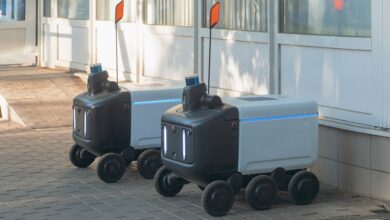Robots for On-Site Detection of Hazardous Volatile Organic Compounds

Bin Hu and colleagues have developed mobile detection systems for hazardous gases and volatile organic compounds (VOCs) by designing remote-controlled sampling devices like aerial drones and miniature remotely operated ships. This research was published in ACS Analytical Chemistry.
Nightmare material or man’s greatest friend? A team of researchers equipped a dog-like quadruped robot with a motorized arm to collect air samples from potentially hazardous scenarios, such as an abandoned building or a fire.
According to the team, the robot dog transports samples to a human, who evaluates them for potentially harmful substances. While the technology requires additional improvement, demonstrations illustrate its potential utility in hazardous environments.
Testing the air for toxic substances at hazardous workplaces or after an accident, such as a fire, is a critical but dangerous activity for scientists and professionals. The team’s most recent addition to this mechanical menagerie is a dog-like robot with an articulated testing arm affixed on its back. The independently operated arm has three-needle trap devices (NTDs), which may take air samples anytime during the robot’s terrestrial mission.
The researchers drove their four-legged “lab” into several inhospitable locations, including a waste disposal facility, sewage system, gasoline fireground, and chemical warehouse, to collect air samples for dangerous VOCs.
While the robot struggled to navigate in rainy and snowy conditions, it collected air samples and returned them to the portable mass spectrometer (MS) for on-site analysis in less time than it would take to transport the samples to an off-site laboratory—and without exposing a technician to a dangerous environment. The researchers claim that the robot-MS system is a “smart” and safer method of detecting potentially dangerous substances.
The authors acknowledge the Guangzhou Science and Technology Program and the National Natural Science Foundation of China as funding sources.
Journal Reference:
Liu, X., et al. (2024) Portable Mass Spectrometry for On-site Detection of Hazardous Volatile Organic Compounds via Robotic Extractive Sampling. Analytical Chemistry. doi:10.1021/acs.analchem.4c01555



